Simplify your swing from tee to green
Golf really doesn’t have to be a headspin. While you may never get to the level where you can turn professional, you can always be a good amateur or, at the very least, a better player than you are right now.
I’m still only 27, but I’ve played in countless pro-ams throughout my career and it really is amazing how many times I see my amateur playing partners make the same fundamental mistakes by thinking too much about their swing. The thing is, most of these errors can be rectified by eliminating the technical jargon between their ears and focusing on basic swing thoughts and practice drills.
Over the coming pages I’m going to show you a few simple techniques I focus on with my coach Grant Field. I know they can work for you because I’ve been doing them since I was coming up through the junior ranks in Queensland. When something works, you stick to it. My whole game is built on keeping things simple. I don’t like to overthink or make things more complicated than they need to be. You only have to ask the editors of this magazine when they ask me how I play a particular shot… sometimes I find it hard to articulate because, in most cases, it’s based more on feel than formula. And trust me, if I’m not worrying too much about the technical side of the game on the PGA Tour, you shouldn’t either.
DRIVER
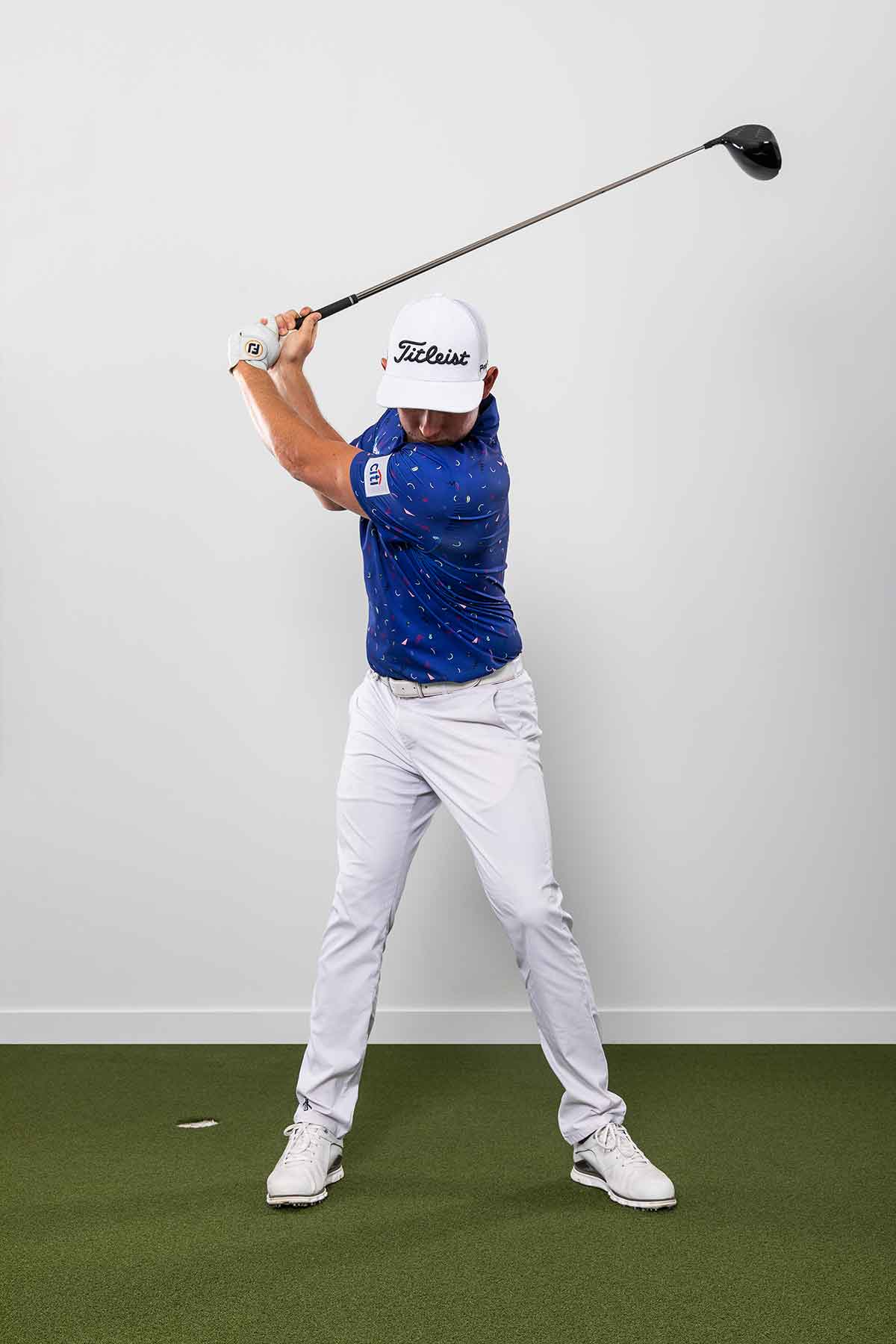 HOLD IT LIKE HIDEKI FOR CONTROLLED POWER
HOLD IT LIKE HIDEKI FOR CONTROLLED POWER
We’ve all seen footage of Hideki Matsuyama’s pause at the top of his swing. While I don’t exaggerate it for as long as Hideki does, there’s certainly method to his madness when it comes to generating controlled power on a consistent basis. I’m always working on this with my coach, Grant. We’re all human, and even pros have a tendency to rush the swing at any given time. When this happens, I concentrate on creating some lag time at the top before I release through it. I’ve noticed amateurs, particularly male amateurs, tend to go at it too hard off the tee. They think the secret to bombing drives is by swinging harder. Wrong. You should always hang at the top of your backswing for a split second, then come through with controlled speed so your arms and hands remain in sync and you’re ensuring your clubface is square at impact.
IRONS
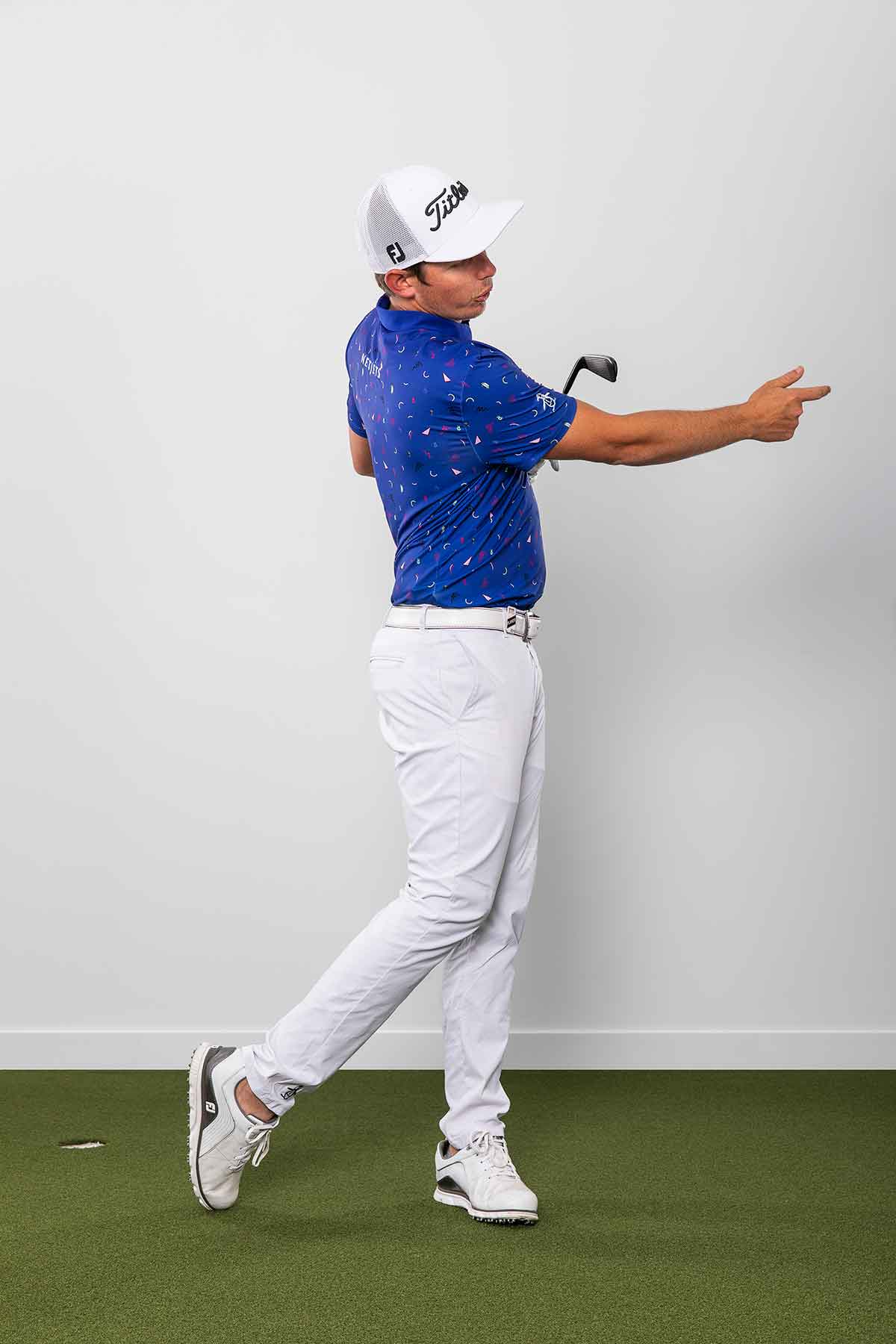 ARMS MUST MATCH THE BODY
ARMS MUST MATCH THE BODY
Like any shot in golf, your setup and where your arms match up to the rest of your body is crucial to putting a proper swing on it. This is particularly the case with your irons. When I practise, a good training drill for me is focusing on getting my right big toe in line with my left heel [inset below]. I also make sure I bring my heel off the ground because this gets my body working as one from the takeaway. This drill has stuck with me for a long time and is a big part of my consistency on tour because it resets my muscle memory and gets my arms and body to match up – from the takeaway all the way to impact. Another thing: I don’t hit it with 100 percent effort – maybe 60 percent, and I always like finishing up on my toes. Give it a try!
WEDGES
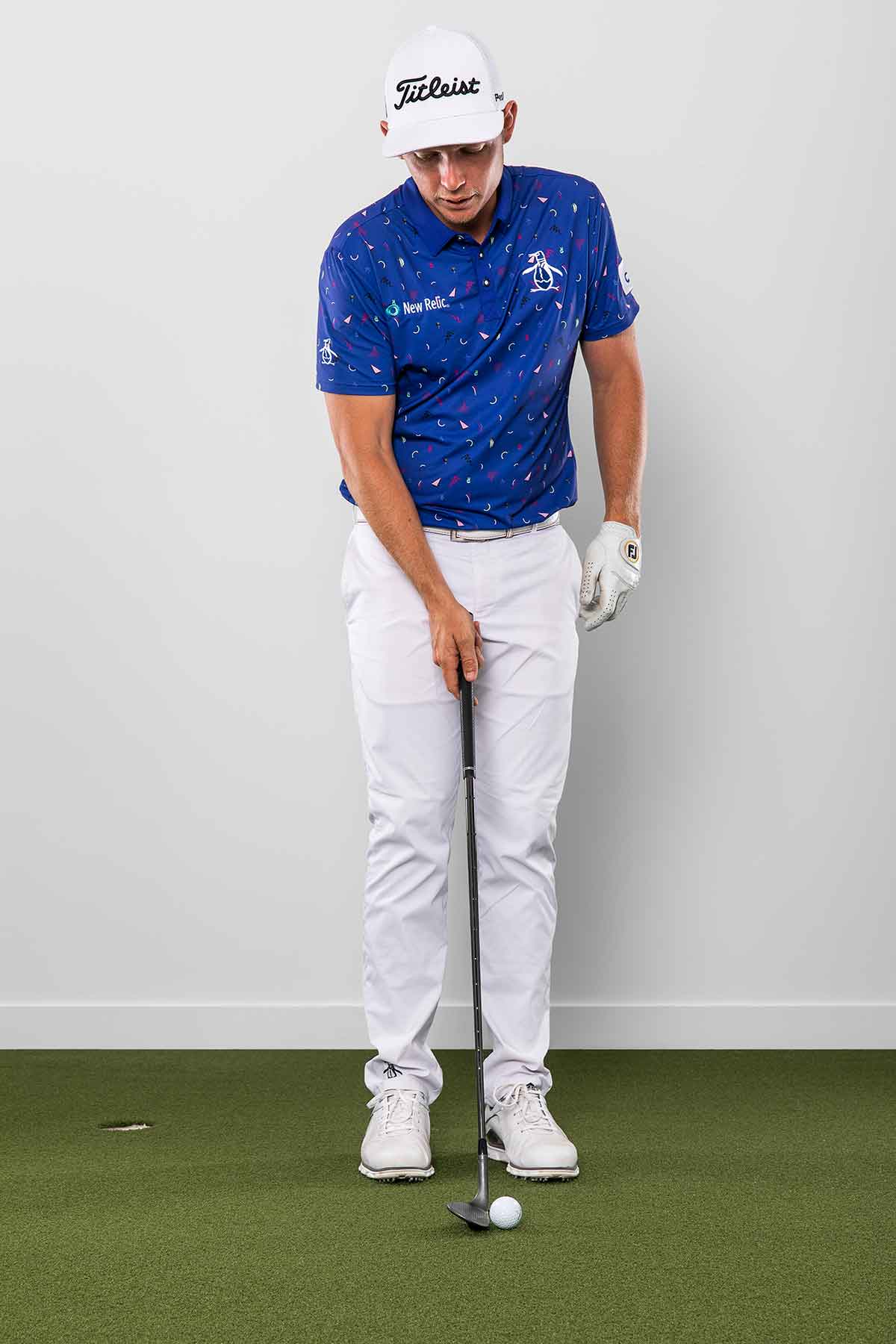 SHAKE THOSE NASTY SHANKS
SHAKE THOSE NASTY SHANKS
Remember what I said about not getting too technical? Well, when it comes to my wedges, I don’t work on technique much at all. I focus more on flight drills and distance control. To improve my consistency in this area I work on my address the most. I always like to have my ball forward of centre and feel like my heel is off the ground. I definitely see a lot of amateurs digging their heels in when they have a wedge in their hands. Don’t do it. Wedge shots also tend to bring out the dreaded “S” word for amateurs. Why are shanks so common from 100 metres and in? It’s most definitely a result of forward lean at impact. With the clubhead swinging out to in and the face closing, you’re always a risk of hitting off the hosel.
Here’s a simple swing thought to help eliminate the “hosel rocket”: feel like you’re casting the wedge out and getting the club back to neutral. Don’t feel you need to try to close the clubface more at impact as this will only increase the likelihood of another shank.
PUTTER
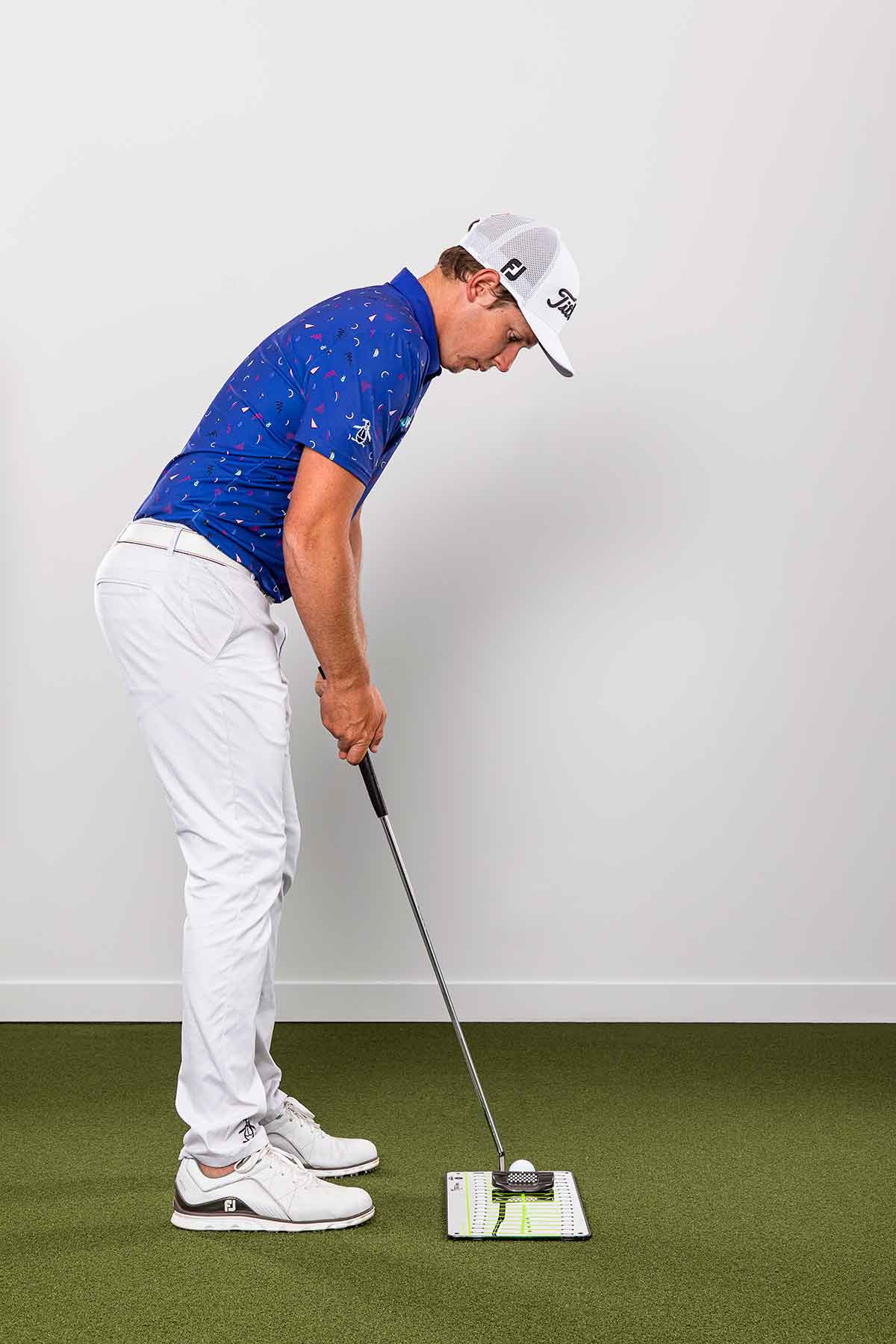 GET YOUR LEFT EYE OVER THE BALL
GET YOUR LEFT EYE OVER THE BALL
A common theme I see in pro-ams is watching guys hit it well from tee to green, only to watch them lose shots on the putting surface because they don’t have a consistent stroke or setup. The easiest solution to help your putting, and one I’ve been using for years, is to get yourself a mirror to stand over. Practising with a putting mirror shows me where my eyeline is at address. This is important because I like to ensure my left eye is directly over the ball and my shoulders are square to the target line. My putting mirror also has holes that allow me to put tees in them so I can work on my path and groove a repeatable stroke. Of all the things that can go wrong in my game, the putting stroke and setup is the one part that can change so dramatically and needs a quick fix. To avoid potential distaster, I use the putting mirror before every round so I can make sure my body is in correct position before I even take the putterhead back.
BONUS TIP
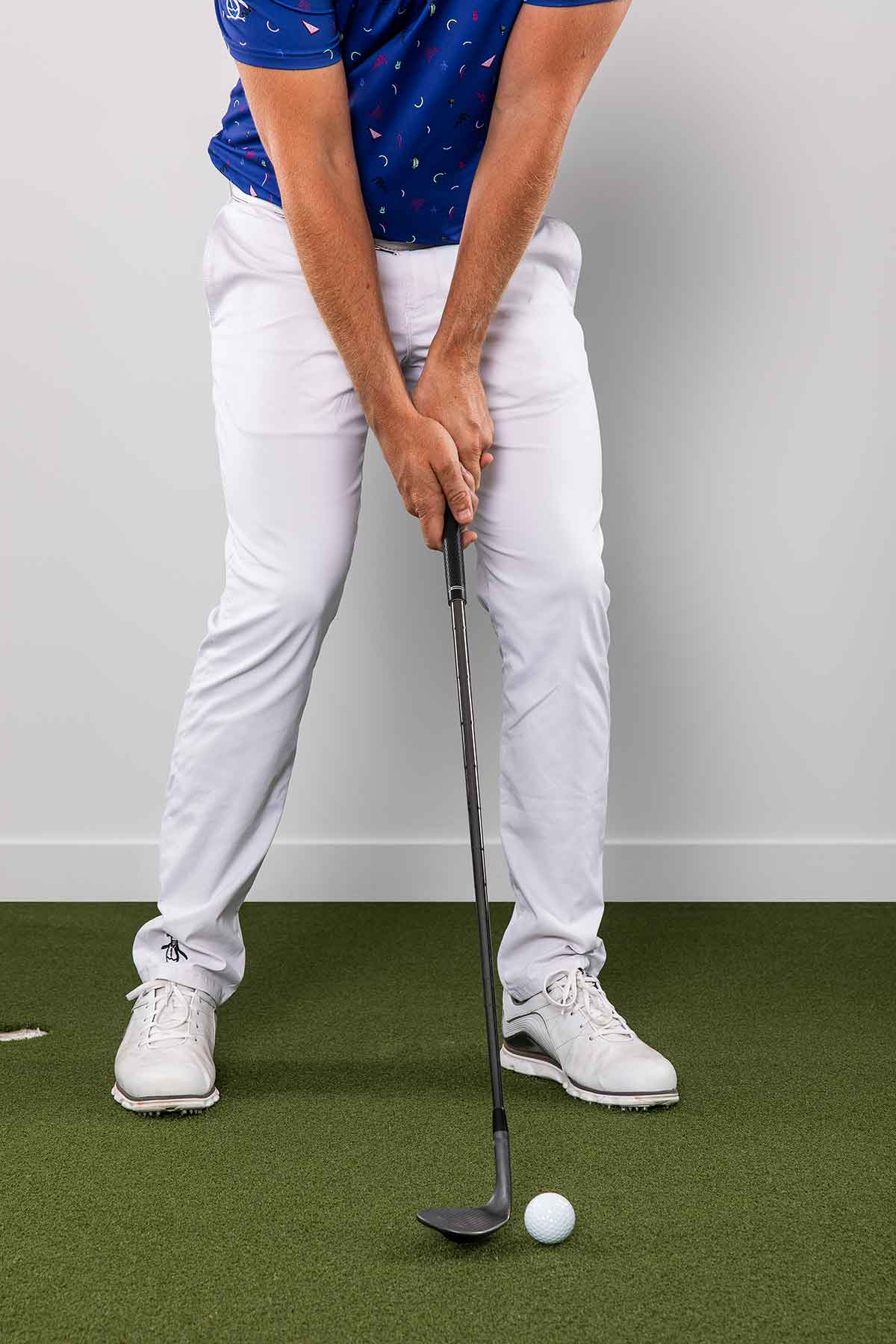 EAT THE BUNKERS: OPEN THE CLUBFACE MORE IN SAND
EAT THE BUNKERS: OPEN THE CLUBFACE MORE IN SAND
I always think amateurs don’t open up their clubface enough when they’re in a tricky spot in the sand. Consequently, the grind of the wedge doesn’t work how its designed to. I reckon this accounts for 80 percent of amateurs not getting out of the sand on their first attempt. Sometimes they’ll hit a nice shot but because they’ve hit it with the leading edge of the club, it stops a half-decent attempt from being a really good shot. I like to play bunker shots a little bit forward in my stance and keep the same motion. You want a consistent low point so you can determine the ball positioning but, like anything, it’s a technique that requires practice. The simplest advice I can give anyone on bunker shots from any distance is this: if you want to hit a longer shot, still open your face but use a longer club, like a pitching wedge or 9-iron. With all my wedges I let the length of my backswing determine the distance of the shot, not the speed of the swing. Remember this and you will save plenty of shots and not be afraid of the bunkers ever again.
www.golfdigest.com


